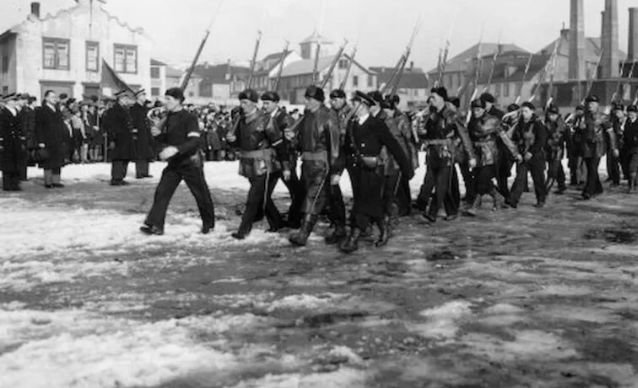The Invasion of Saint Pierre and Miquelon in 1941, the Only Nazi Germany-loyal Territory in North America, Lasted 20 Minutes

Saint Pierre and Miquelon (Saint-Pierre-et-Miquelon), a French archipelago of two islands located in North America about twenty-five kilometers off the coast of Newfoundland, is the last remaining vestige of the former Viceroyalty of New France (which encompassed parts of what are now Canada and the United States, such as Quebec and Louisiana). Like other territories, it became a headache for the Allies when World War II broke out and the French mainland was occupied by the Germans, as the local administration remained loyal to the Vichy government. This is why De Gaulle ordered its conquest at the end of 1941.
The Portuguese navigator João Álvares Fagundes discovered the archipelago around 1520, naming it The Eleven Thousand Virgins, before, sixteen years later, the Frenchman Jacques Cartier renamed it Saint Pierre Island in honor of the patron saint of fishermen. Those waters proved to be extraordinarily rich and attracted numerous cod and whaling ships, especially Basque-French ones from Saint-Jean-de-Luz, who named the second island Miquelon (Mikeleune). There is a third island, Langlade, which has been known by various names throughout history and is now connected to the latter by a sand isthmus.
The wealth of these fishing grounds attracted the British, who expelled the French for half a century after the Treaty of Utrecht, until the Treaty of Paris restored the archipelago in exchange for the surrender of mainland New France. History repeated itself decades later during the American Revolution (which involved French collaboration), and the islands changed hands several times until they finally remained French during Napoleon’s era, as interest in the archipelago had waned due to the decline in fishing.
On June 22, 1940, the so-called Second Armistice of Compiègne was signed, whereby Nazi Germany and the French Third Republic ended hostilities, leaving France divided into two parts: one in the north and west (including the Atlantic coast), occupied and directly administered by the Germans, and another in the south governed by a new regime loyal to Hitler, centered in Vichy, which was granted control of non-European territories. Consequently, Saint Pierre and Miquelon were placed under the latter.
The local authority was represented by the current Administrateur, Gilbert de Bournat, appointed in 1936, supported by Admiral Georges Robert as High Commissioner and Commander-in-Chief of the Western Atlantic (which, besides the archipelago in question, included the Antilles and Guyana). It should be noted that some of these territories, such as Martinique and Guadeloupe, rejected the terms of the armistice on the grounds that it had been signed under duress, siding with the Allies.
However, the administrator kept Saint Pierre and Miquelon loyal to the regime led by Marshal Pétain since July 1940, which concerned both Canada and the United States because the islands housed a radio station and were connected to Europe via transatlantic cables, creating the possibility of providing German submarines with weather conditions, convoy movements, and warship activity, in addition to supplying fish to Germany through France.
